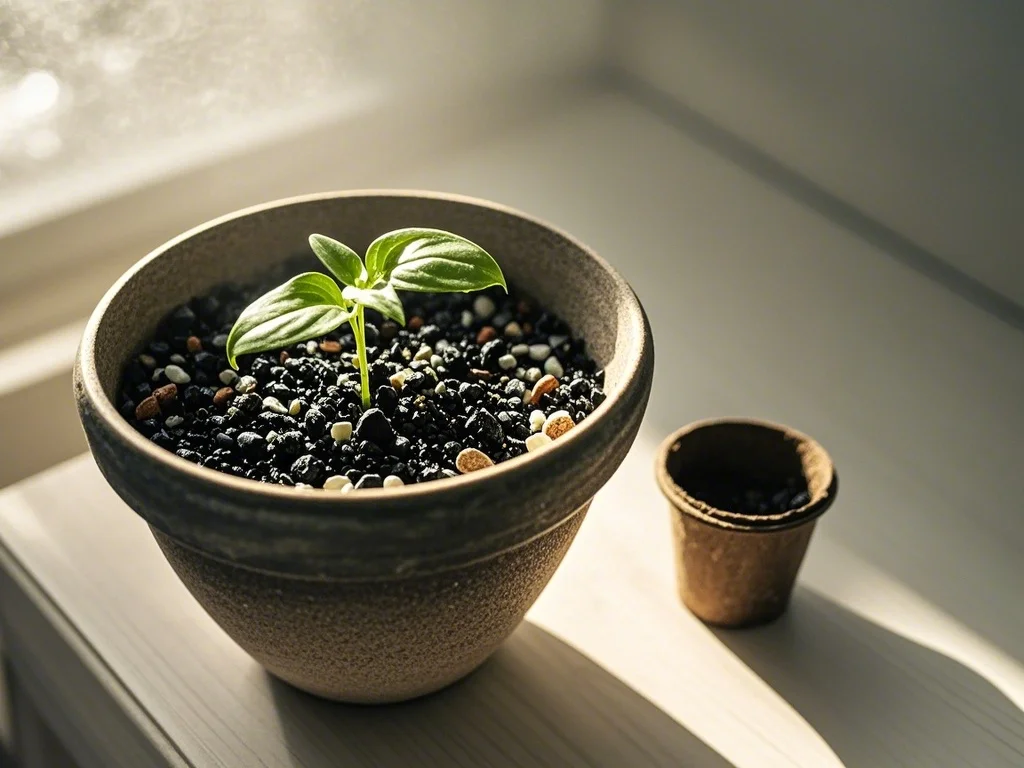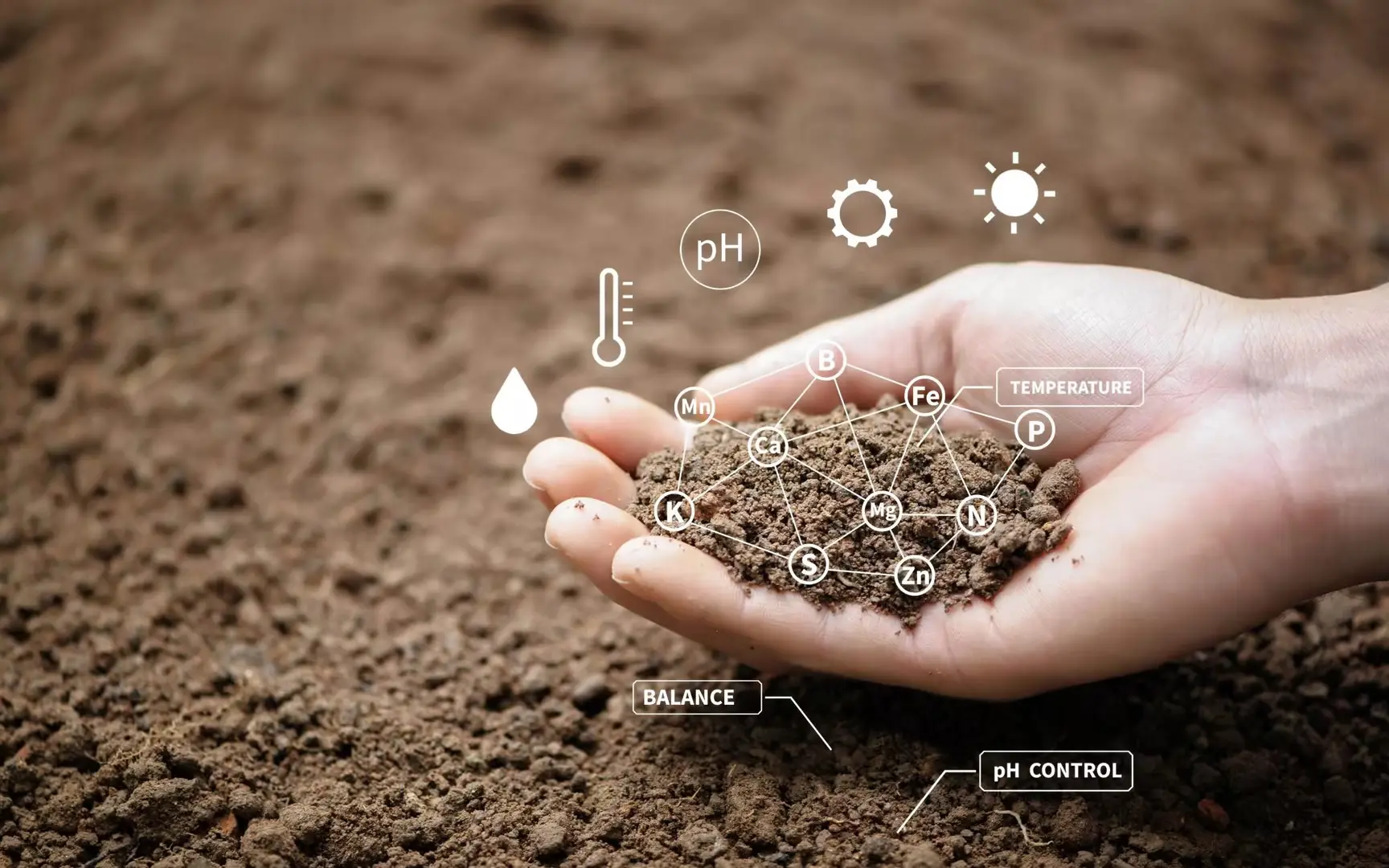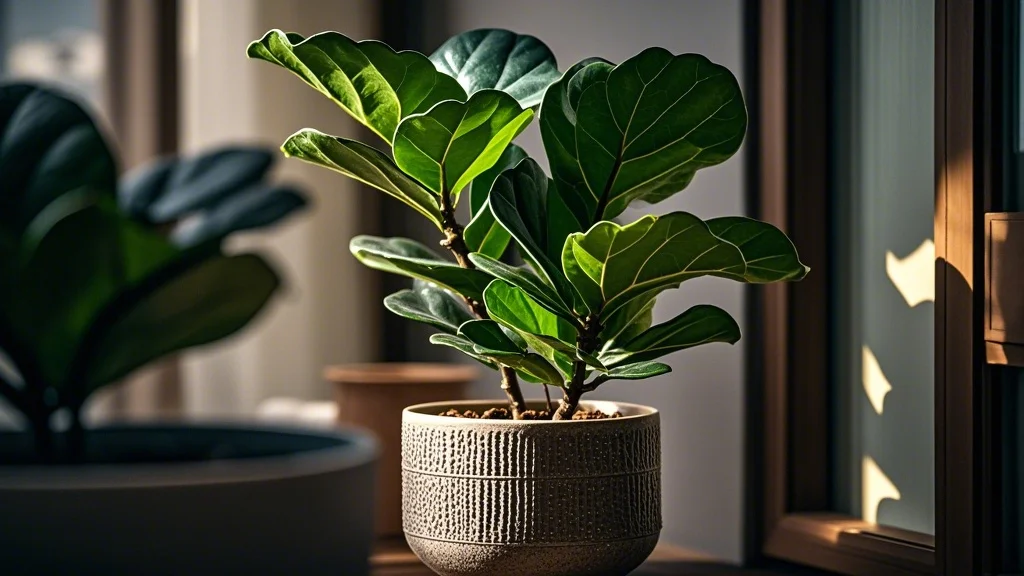Choosing the right pot for your indoor plants is crucial for their health and growth. Different materials offer unique properties that can significantly impact soil moisture, root development, and overall plant well-being. In this comprehensive guide, we’ll explore various pot materials, their pros and cons, and help you make an informed decision for your urban garden.
Contents
Clay Pots
Terracotta
Terracotta pots are a classic choice for many plant enthusiasts.
Pros:
- Porous nature allows soil to breathe
- Excellent drainage prevents waterlogging
- Natural aesthetic complements many decor styles
- Sturdy and durable when handled properly
Cons:
- Can dry out soil quickly, requiring more frequent watering
- Prone to cracking in freezing temperatures
- Heavier than plastic alternatives
- May develop white mineral deposits over time
Best for: Succulents, cacti, and plants that prefer drier conditions
Glazed Clay
Glazed clay pots offer a middle ground between terracotta and less porous materials.
Pros:
- Retains moisture better than unglazed terracotta
- Available in various colors and designs
- Durable and long-lasting
Cons:
- Less breathable than unglazed terracotta
- Heavier than plastic pots
- Can be more expensive than basic options
Best for: A wide range of plants, especially those requiring moderate moisture
Plastic Pots
Plastic pots are popular for their versatility and affordability.
Pros:
- Lightweight and easy to move
- Retain moisture well, reducing watering frequency
- Available in various colors and styles
- Affordable and widely accessible
- Durable and resistant to cracking
Cons:
- Less breathable, which can lead to soil compaction
- May not provide adequate support for larger plants
- Can become brittle over time with sun exposure
- Less environmentally friendly than natural materials
Best for: Moisture-loving plants, seedlings, and temporary containers
Ceramic Pots
Ceramic pots offer a blend of functionality and aesthetics.
Pros:
- Excellent water retention properties
- Available in a wide range of designs and glazes
- Provides good insulation for roots
- Sturdy and stable for larger plants
Cons:
- Heavy, making them difficult to move
- Can be expensive, especially for larger sizes
- May lack drainage holes, requiring careful watering
Best for: Statement plants, decorative displays, and plants that prefer consistent moisture
Concrete Pots
Concrete pots are gaining popularity for their modern look and durability.
Pros:
- Extremely durable and long-lasting
- Provides excellent insulation for roots
- Modern, industrial aesthetic
- Can be customized with different finishes and colors
Cons:
- Very heavy, challenging to move once placed
- Can be prone to cracking if not properly cured
- May leach lime, affecting soil pH over time
Best for: Large outdoor plants, trees, and architectural displays
Wood Containers
Wooden pots and planters offer a natural, rustic charm.
Pros:
- Aesthetically pleasing, especially in garden settings
- Good insulation properties for roots
- Can be customized and painted easily
- Biodegradable at the end of their life cycle
Cons:
- Prone to rotting if not properly treated
- May harbor pests or fungi
- Requires regular maintenance to prevent decay
- Can dry out quickly in hot weather
Best for: Herb gardens, raised beds, and outdoor plantings
Metal Pots
Metal containers can add a sleek, modern touch to your plant collection.
Pros:
- Durable and long-lasting
- Available in various finishes (galvanized, copper, brass)
- Lightweight, especially aluminum options
- Can be molded into unique shapes and designs
Cons:
- Conduct heat and cold, potentially stressing plant roots
- May rust or corrode over time
- Can become very hot in direct sunlight
Best for: Drought-tolerant plants, modern decor schemes, and outdoor use in shaded areas
Fiberglass and Resin Pots
These synthetic materials offer durability and versatility.
Pros:
- Lightweight yet durable
- Resistant to cracking and chipping
- Available in various colors and finishes
- Can mimic the look of more expensive materials
Cons:
- Less breathable than natural materials
- May become brittle with prolonged sun exposure
- Not biodegradable
Best for: Large plants that need to be moved frequently, outdoor use in various climates
Fabric Pots
Also known as grow bags, fabric pots are gaining popularity among urban gardeners.
Pros:
- Excellent aeration for roots, promoting healthy growth
- Prevents root circling and encourages air pruning
- Lightweight and easy to store
- Affordable and often reusable
Cons:
- Dry out faster than solid containers
- Less visually appealing than traditional pots
- May degrade over time with sun exposure
Best for: Vegetables, herbs, and plants that benefit from extensive root systems
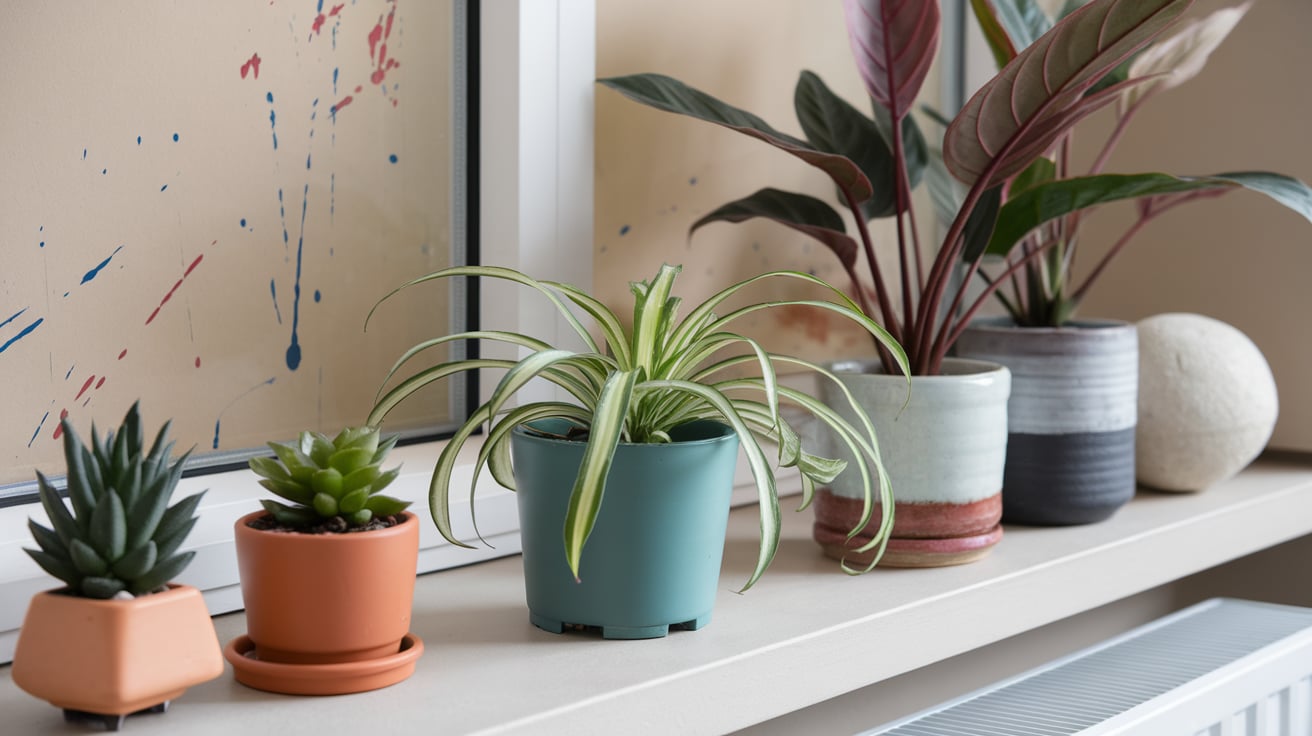
Factors to Consider When Choosing Pot Materials
- Plant Type: Consider the specific needs of your plants. Succulents prefer porous materials like terracotta, while tropical plants may thrive in plastic or glazed ceramic.
- Watering Habits: If you tend to overwater, choose materials with good drainage like terracotta. For those who forget to water, plastic or glazed ceramic might be better options.
- Weight: Consider where you’ll place the pot and if you’ll need to move it frequently. Plastic and fabric pots are ideal for mobility, while concrete and large ceramic pots are best for permanent locations.
- Aesthetics: Choose a material that complements your decor and personal style. Ceramic and glazed clay offer a wide range of designs, while concrete and metal suit modern interiors.
- Climate: For outdoor use, consider materials that can withstand your local weather conditions. Plastic and fiberglass are versatile, while terracotta may crack in freezing temperatures.
- Size: Larger plants require sturdier materials like ceramic or concrete to provide adequate support and stability.
- Budget: Plastic pots are generally the most affordable, while high-quality ceramic and concrete pots can be significant investments.
- Environmental Impact: Consider the longevity and recyclability of the material. Natural materials like terracotta and wood are biodegradable, while plastic has a larger environmental footprint.
Caring for Different Pot Materials
To extend the life of your pots and ensure optimal plant health, follow these care tips:
- Clay and Terracotta: Soak new pots in water before use to prevent them from wicking moisture from the soil. Clean with mild soap and water, avoiding harsh chemicals.
- Plastic: Clean regularly with soap and water. Store out of direct sunlight when not in use to prevent degradation.
- Ceramic: Handle with care to avoid chipping. Use a soft brush to clean glazed surfaces and avoid abrasive materials.
- Concrete: Seal unfinished concrete pots to prevent lime leaching. Clean with a mild detergent and avoid acidic cleaners.
- Wood: Apply a non-toxic sealant to prevent rot. Avoid overwatering and ensure proper drainage to extend the pot’s life.
- Metal: Clean and dry thoroughly to prevent rust. Apply a clear sealant to protect the finish.
- Fabric: Wash between uses to prevent mold growth. Allow to dry completely before storing or reusing.
Conclusion
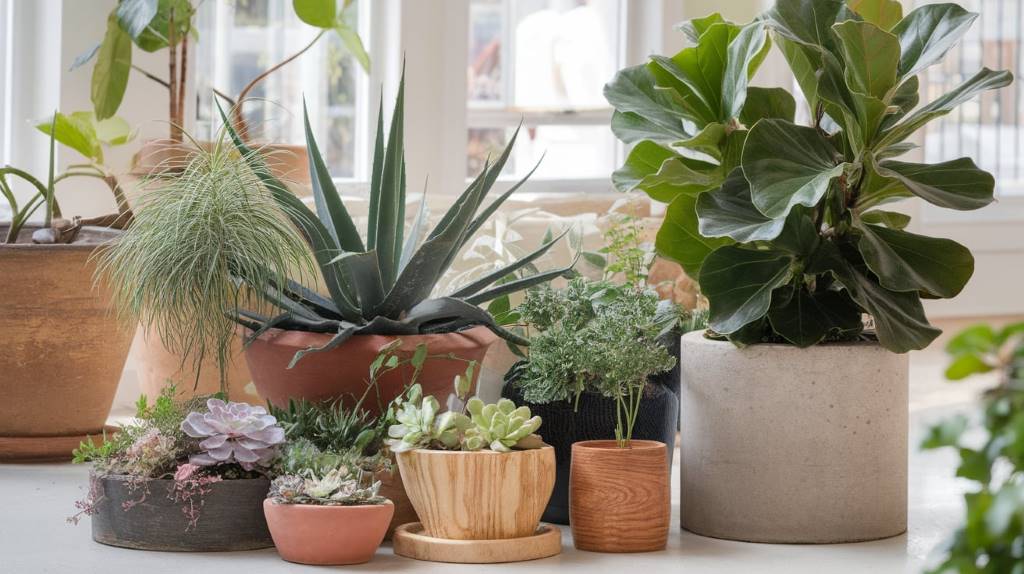
Choosing the right pot material is an essential aspect of successful indoor and urban gardening. By considering factors such as plant needs, watering habits, and aesthetic preferences, you can select the perfect container to help your plants thrive. Whether you opt for the classic appeal of terracotta, the versatility of plastic, or the modern look of concrete, each material offers unique benefits for your green companions.
Remember that experimentation is key in gardening. Don’t be afraid to try different pot materials to find what works best for your plants and lifestyle. With the right combination of pot, soil, and care, you’ll be well on your way to creating a lush, thriving urban garden that brings life and beauty to your space.

